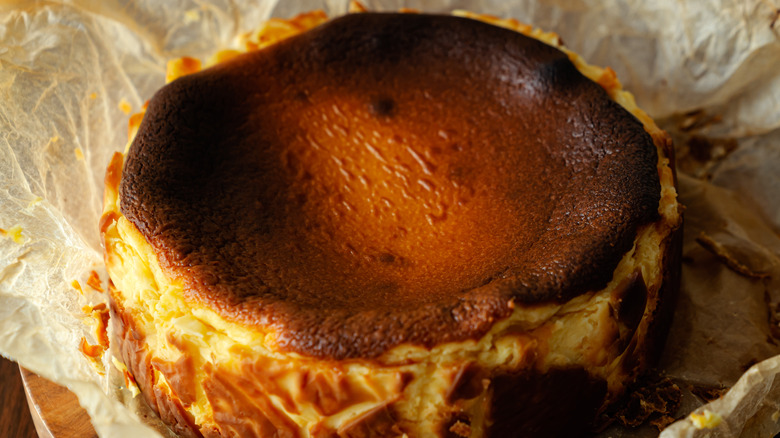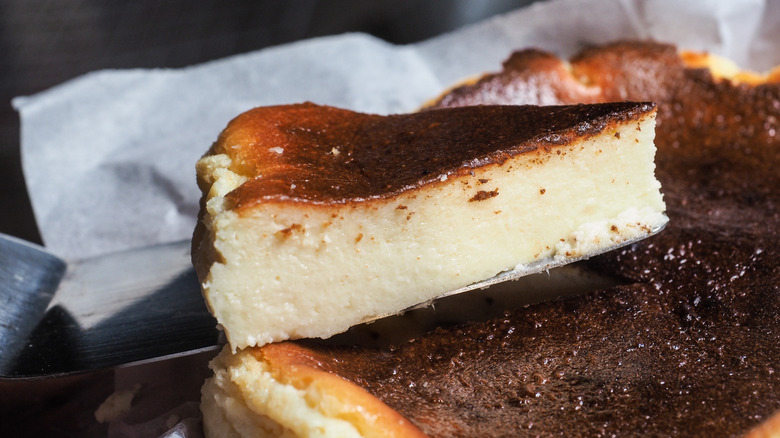Is Basque Cheesecake Really Burnt?
Ask Instagram which dessert has the spotlight, and you'll receive a two-word answer: Basque cheesecake, the dessert that The New York Times described as potentially becoming the "birthday-cake or cookie butter flavor" in 2021. If you are unfamiliar with Basque cheesecake, it's a yellowish, rustic, crustless, baked cheesecake that stands out for its burnt appearance and uneven edges.
Although the Internet made this cake a recent trend and Cheesecake Factory has one, it was created in 1990 in the Basque region of Spain, specifically in San Sebastián (via No Recipes). Santiago Rivera, the chef of a traditional pintxos restaurant known as La Viña, invented the dessert using common ingredients like authentic cream cheese, heavy cream, sugar, eggs, and flour. Later, in 2013, as Fine Dining Lovers notes, some chefs from Chicago flew to Spain to look for inspiration and found the Basque cheesecake in Mugaritz, where chef Andoni Luis Aduriz helped the chefs with some tips. Then, they returned to the U.S. with this amazing discovery and a brand new taste.
Many would probably wonder if calling it burnt is a mistake, but "burnt Basque cheesecake" is a very common name for this dessert. Some may wonder if it really is burnt, meaning, does it taste like carbon? Or, is the exterior just really crunchy? This name actually refers to the baking method used, that gives that silky and smooth look, and that toasty taste.
Basque cheesecake is caramelized until it looks burnt
As Dish 'n' the Kitchen explains, the very high temperature used to bake the dessert gives a burnt look to them. And, the process doesn´t consist of burning it or coloring it but caramelizing it so it can look brown. This creates that game of texture that characterizes the cheesecake so much — creamy on the inside, custardy on the outside. Many, including Nico Norena, highlight that the secret to a perfect Basque cheesecake is the high cooking temperature.
The browning happens because of what No Recipes call non-enzymatic reactions. First, the sugar caramelizes and forms new chemical compounds that bring the caramel flavor, and then the Maillard reaction occurs specifically when the cream cheese and sugars create an umami flavor. So, the top might end up looking like it is burnt, but the delicious flavor remains intact. It's similar to what happens when making crème brûlée (the name actually means "burnt cream").
Now that you know this is actually not burnt, but caramelized until perfection, you're ready to go beyond the likes and shares and taste a real burnt Basque cheesecake.

